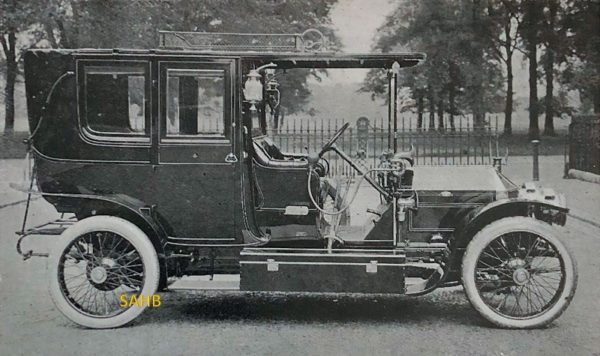
This fine Belgian car was captioned as ‘A Luxurious Landaulet’. It had just been supplied to a customer in Scotland.
The Métallurgique company started in 1860 as manufacturers of railway locomotives and rolling stock. They moved into making cars in 1901 and first exhibited at the Paris Salon in that year. Because all their three factories were geared to heavy engineering and thus unsuitable, new premises were built in Marchienne-au-Pont in the western part of the French-speaking industrial city of Charleroi.
The first cars were voiturettes, and few were made until Ernst Lehmann was recruited from Daimler in Germany in 1903. He set about designing an all-new range, introduced in 1905, that resembled the cars of his former employers.
The cars had pressed-steel chassis, live rear axle, shaft drive, high-tension ignition and the option of dynamo-powered electric lighting. They built a reputation for Métallurgique as a maker of some of the best sporting cars in Europe, most notably in the medium- to large-capacity 4-cylinder class. In 1907 there were seven models in the range, from a 2,798cc 16/20 h.p. to a 9,890cc 60/80 h.p. The company never made a 6-cylinder car.
The first monobloc engines arrived in 1908, and all engines had an unconventional feature: a désaxé crankshaft, offset from the centre-line of the cylinders. This was claimed to reduce friction and give a better-balanced engine.
Métallurgique were among the first companies to introduce a vee-shaped radiator, which came with the 1907 models and can be seen in our Snapshot.
The cars were also made from 1909 under licence by Bergmann in Berlin and sold as Bergmann-Métallurgique.
For 1908 the range was joined by a 40 h.p., a smaller version of the 60/80, and the 5-litre 26 h.p. that we show here. Most cars were bodied by Vanden Plas – unsurprising considering the Belgian origins of both companies.
In 1927 the company was taken over by Minerva-Imperia and ceased to exist.
Picture courtesy of the Richard Roberts Archive







Leave a Comment